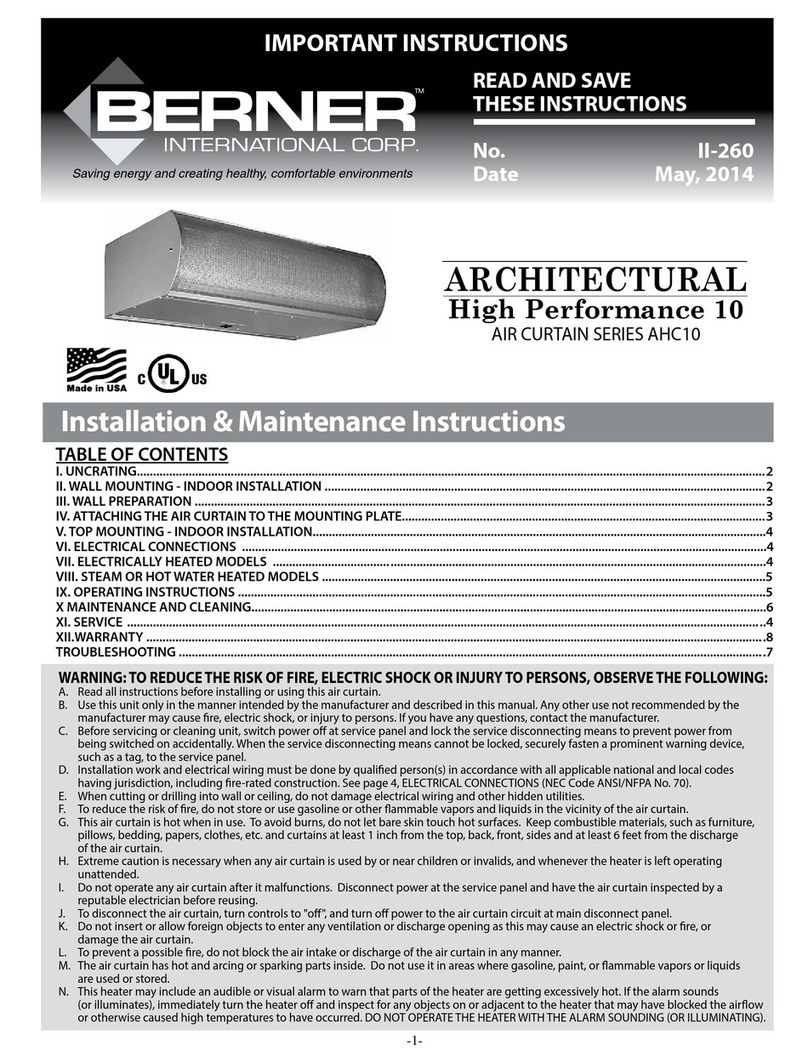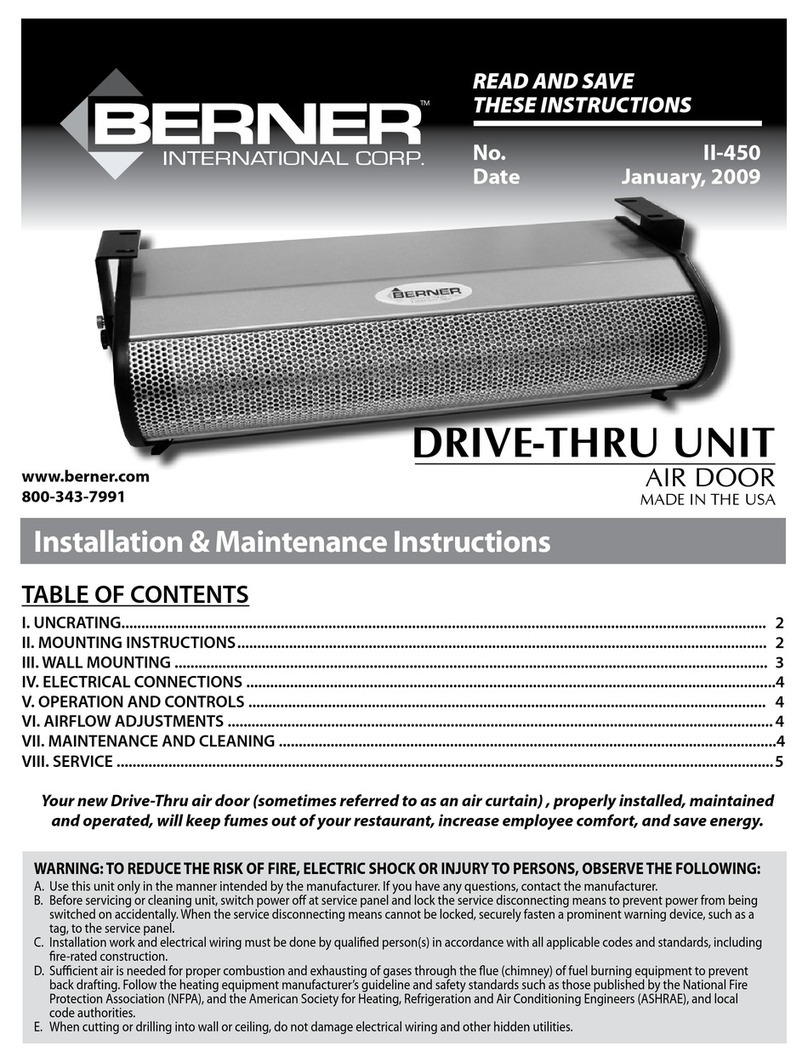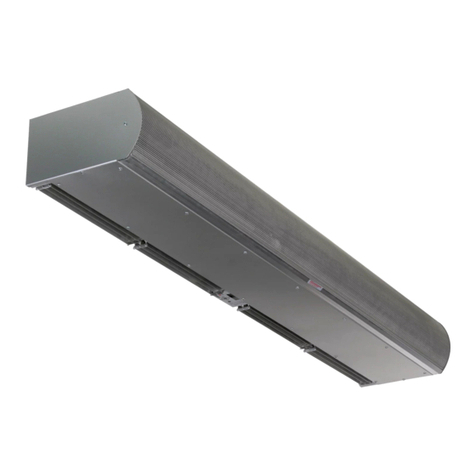
- 6 -
L. Reinstall the hinged access cover by positioning one hinge
into the corresponding catch located on the unit. Raise the
other hinge to the unit, when the catch is located press in the
hinge and release it into the catch. Swing the access cover
into place and align the mounting holes with the threaded in-
serts on the unit. Reinstall the two ¼” bolts. See Figure 11.
M. Attach the perforated intake grille on the ¼” shoulder bolts of
the unit. See Figure 15. While holding the grille level with
the unit, align the keyhole slots with the shoulder bolts. Press
the grille firmly against the unit and push down until the grille
rests flush with the bottom of the unit.
N. Attach the louvered discharge grille to the unit with the six
(6) No. 6 x ¾” phillips head screws provided. See Figure 14.
O. Switch on the power at the service disconnect. Turn on the
unit at the selector switch and check the sequence of opera-
tion against that provided on the wiring diagram. Proceed to
Section V: Operation and Air Flow Adjustment.
C. Adjusttheairdirectional vanes in the louvered dischargegrille
so the split location is approximately 3” outside the doorway.
FIGURE 13 - Time Delay Adjustment
FIGURE 14 - Louvered Discharge Grille Installation
V. OPERATION AND
AIR FLOW ADJUSTMENT
A. With the air curtain operating on high speed, and the door in
its full open position, check to see that nothing is obstructing
the air flow at the louvered discharge grille.
B. Find the air stream “split” location. Hold a handkerchief, by
its top corners, approximately 12” above the floor. Gently
move the handkerchief back and forth in the doorway. Make
sure the air is being directed to both the inside and the out-
side. The split locations indicated when the handkerchief is
vertical with minimal flutter.
VI. PREVENTIVE MAINTENANCE &
SERVICE
A. CAUTION: ELECTRIC SHOCK HAZARD Disconnect
power whenever servicing unit. More than one discon-
nectmay be required to de-energize unit.
Any service performed on the AURA Series air door MUST
be done by qualified personnel.
Berner air doors require very little servicing. All parts are
easily accessible for periodic inspection and maintenance.
Units should be cleaned at least twice a year. Your particular
application (the amount of dirt and dust in the air) and location
of the unit(s) will determine how often your unit(s) will need
tobecleaned and serviced. All motorshavepermanently lubri-
cated, sealed, sleeve bearings and require no maintenance.
B. TO PERFORM PREVENTIVE MAINTENANCE, RE-
MOVE THE LOUVERED DISCHARGE GRILLE, THE
PERFORATEDINTAKEGRILLEANDTHEBOTTOM
ACCESS COVER.
1. Remove the discharge grille by unscrewing the six (6)
Phillips head screws located on the inside edge of the
grille. See Figure 14.
2. Remove the intake grille by lifting up on both sides with
equal force. Once the grille is detached, pull the grille
away from the unit until it clears the shoulder bolts. This
will expose the bottom access cover mounting bolts and
the heating coils (if applicable).
3. Remove the bottom two ¼” mounting bolts on the intake
side of the unit. Swing the access cover to rest in the
vertical position. Grasp both sides of the access cover
and press in on the spring loaded hinge. This will re
lease theaccesscover from the unitandexposethe blower
mounting plate. See Figure 11.
FIGURE 15 - Attaching Intake Screen or Back Adapter




























